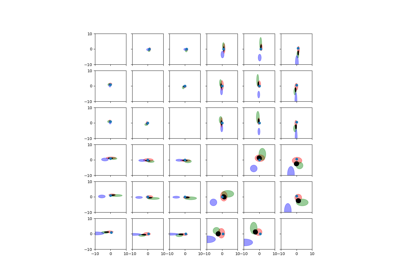pytransform3d.transformations.random_exponential_coordinates#
- pytransform3d.transformations.random_exponential_coordinates(rng=Generator(PCG64) at 0x7F7D0D201380, cov=array([[1., 0., 0., 0., 0., 0.], [0., 1., 0., 0., 0., 0.], [0., 0., 1., 0., 0., 0.], [0., 0., 0., 1., 0., 0.], [0., 0., 0., 0., 1., 0.], [0., 0., 0., 0., 0., 1.]]))[source]#
Generate random exponential coordinates.
Each component of Stheta will be sampled from a standard normal distribution \(\mathcal{N}(\boldsymbol{0}_6, \boldsymbol{\Sigma}_{6 \times 6})\).
- Parameters:
- rngnp.random.Generator, optional (default: random seed 0)
Random number generator
- covarray-like, shape (6, 6), optional (default: I)
Covariance of normal distribution.
- Returns:
- Sthetaarray, shape (6,)
Exponential coordinates of transformation: S * theta = (omega_1, omega_2, omega_3, v_1, v_2, v_3) * theta, where the first 3 components are related to rotation and the last 3 components are related to translation. Theta is the rotation angle and h * theta the translation. Theta should be >= 0. Negative rotations will be represented by a negative screw axis instead. This is relevant if you want to recover theta from exponential coordinates.

